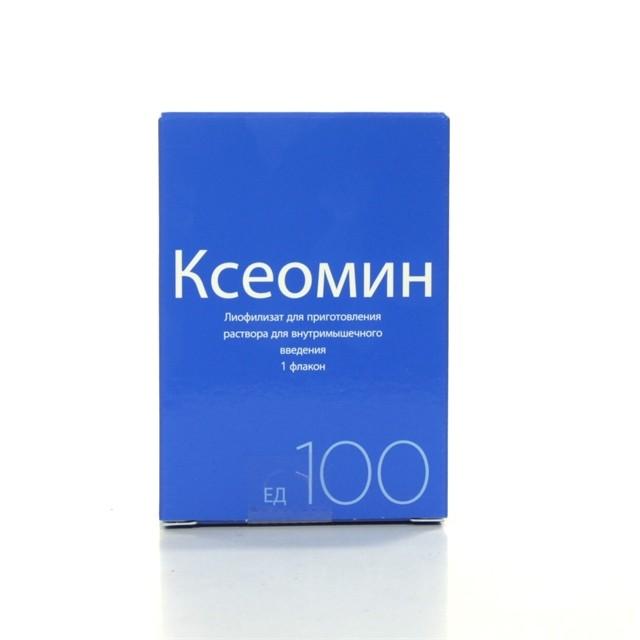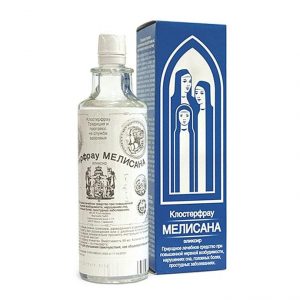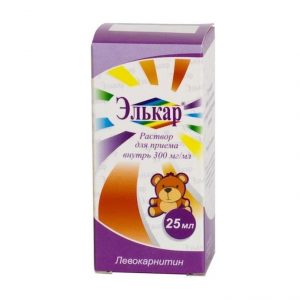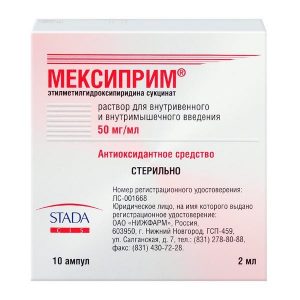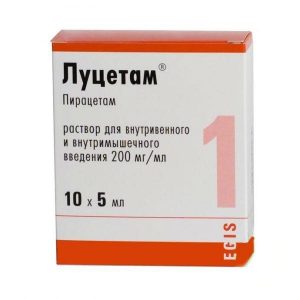Description
Release form
Shredded vegetable raw materials srld41lff4f1 p1frewf4f1 p1141 in
Release form
Lyophilisate for solution for intramuscular administration
Indications
Blepharospasm, idiopathic cervical dystonia (spasmodic torticollis) of predominantly rotational form, spasticity of the hand after a stroke, hyperkinetic folds (facial wrinkles) of the face.
Contraindications
The drug is contraindicated in people who are allergic to the components of the drug, with impaired neuromuscular transmission (gravis, Lambert-Eaton syndrome, prescribed with caution in case of amyotrophic lateral sclerosis, in case of neurological diseases resulting from degeneration of motor neurons and other diseases, and other muscle transmission). The drug is not administered at elevated temperatures and acute infectious or non-infectious diseases.
The drug is contraindicated in pregnancy and lactation.
The drug is not administered to children and adolescents under 18 years of age.
Composition
1 vial contains: active substance: botulinum toxin type A 100 IU, sucrose 4.7 mg, human serum albumin 1.0 mg.
Dosage and administration of
V / m. The drug can only be administered by doctors with special training, as well as experience in handling botulinum toxin and electromyography equipment. The doctor sets the dosage and number of injection sites into the muscle for each patient individually.
Blepharospasm: after dissolution, Xeomin is administered with a sterile 27-30 G needle.
Recommended initial dose is 1.252.5 U (0.050.1 ml) at each injection site, the drug is injected into the medial and lateral parts of the circular muscle eyes (m. orbicularis oculi) of the upper eyelid and in the lateral part of the circular muscle of the eye of the lower eyelid.
If vision is impaired due to spasms in the forehead, lateral areas of the circular muscle of the eye and upper face, additional injections may be made in these areas. The effect of the drug begins, on average, within 4 days after the injection. The effect of each procedure lasts, as a rule, 3-4 months, although it can last significantly longer or less.
If the effect of the initial dose was insufficient (duration <2 months), with repeated procedures, the dose of the drug can be increased by 2 times. The initial dose should not exceed 25 units per 1 eye. In each place should not be administered a dose in excess of 5 units. In the treatment of blepharospasm, the total dosage for 12 weeks of treatment should not exceed 100 units. Spasic torticollis: in the treatment of spasmodic torticollis, the dosage should be selected for each patient individually, depending on the position of the neck and head, localization of pain, muscle volume (hypertrophy, atrophy), the patient s body weight and his reaction to therapeutic procedures. In the practice of treatment, the maximum dose of the drug in the course of one procedure should usually not exceed 200 units, however, a dosage of up to 300 units is possible. At the same place, you should not enter a dose of the drug in excess of 50 units. Therapy for spasmodic torticollis involves injections into the sternocleidomastoid muscle, the muscle that raises the scapula in the scalene muscles, the belt muscle and / or the trapezius muscle. Do not inject into both sternocleidomastoid muscles, as this increases the risk of adverse effects of the drug (in particular dysphagia), which occur with bilateral injections of the drug into this muscle, or at doses exceeding 100 units. Needles of numbers 25, 27 and 30 G are used for injection into superficial muscles, and needles of number 22 are used for deep muscles. With spastic crankshaft, electromyography may be necessary to determine the muscles involved. Injection in several places allows the drug to evenly cover areas of muscles prone to dystonia (especially when injected into large muscles). The optimal number of injection sites depends on the size of the muscle. The effect of the drug begins, on average, within 7 days after the injection. The effect of each procedure lasts approximately 3-4 months, but can last significantly longer or shorter. The interval between procedures should be at least 10 weeks. Dissolution of the drug: when diluting the drug, it is forbidden to open the bottle, removing the cork. Remove the protective plastic cap from the vial. Immediately before diluting the contents of the vial, the central part of the cork should be treated with alcohol. Injection solution is prepared by piercing the cork with a sterile needle and introducing 0.9% sterile isotonic sodium chloride solution for injection into the vial. Carefully turn the vial, mixing the lyophilisate with the solvent until completely dissolved. The drug is not used if, after dissolution, the resulting solution is opaque or contains visible flakes and particles. It should remain transparent and colorless. The drug is dissolved in the required volume according to the table. Solvent volume, ml ED / 0.1 ml 0.5 20 1 10 2 5 4 2.5 8 1.25 Dosages, recommended for Xeomin, can not be used for recounting when using other drugs containing botulinum toxin. Since the preparation does not contain antimicrobial agents, it is recommended to use it immediately after dissolution. If necessary, the dissolved preparation can be stored in the original bottle for up to 24 hours in a refrigerator at a temperature of 2 to 8 ° C, provided that the dissolution was carried out under aseptic conditions. Side effects Side effects are classified by frequency of occurrence: very often (? 1/10), often (? 1/100 to <1/10), not often (? 1 / 1,000 to? 1/100), rarely ( ? 1 / 10,000 to? 1 / 1,000), very rarely (? 1 / 10,000). Blepharospasm: Often: ptosis (6.1%), dry eyes (2.0%). Infrequently: paresthesia, conjunctivitis, dry mouth, skin rash, headache, muscle weakness. In addition, when using a similar drug containing botulinum toxin type A, and used in clinical trials along with Xeomin, the following side effects were noted. They are possible with the use of Xeomin. Often: superficial keratitis, lagophthalmos, skin irritation, photophobia, lacrimation. Infrequently: keratitis, ectropia, diplopia, dizziness, diffuse skin rashes / dermatitis, inversion of the eyelid, focal paralysis of the facial nerves, weakness of the facial muscles, fatigue, blurred vision, blurred vision. Rarely: local swelling of the eyelid skin. Very rare: acute angle-closure glaucoma, ulceration of the cornea. Spastic torticollis: Often: dysphagia (10%), muscle weakness (1.7%), back pain (1.3%). Infrequently: inflammation or pressure at the injection site, headache, asthenia, generalized excessive sweating, tremors, hoarseness, colitis, vomiting, diarrhea, dry mouth, bone pain, myalgia, skin rashes, itching, peeling of the skin, pain in eyes. In addition, when using a similar drug containing botulinum toxin type A, and used in clinical trials along with Xeomin, the following side effects were noted. They are possible with the use of Xeomin. Very often: pain at the injection site. Often: dizziness, high blood pressure, numbness at the injection site, general weakness, flu-like symptoms, general malaise, dry mouth, nausea, headache, stiff muscles at the injection site, irritation at the injection site, rhinitis, upper respiratory tract infections. Infrequently: shortness of breath, diplopia, fever, ptosis, speech impairment. The severity of dysphagia varies from mild to severe, with the possibility of aspiration in rare cases, medical attention is required. Dysphagia can persist for two to three weeks from the moment of injection, however, a case lasting 3 months was recorded. Dysphagia develops dose-dependently according to clinical studies, dysphagia is rare if the total dose of the drug does not exceed 200 units in one procedure. Spasticity of the hand after a stroke: Often: headache, impaired sensation, sensation of heat. In addition, when using a similar preparation containing botulinum toxin type A, and used in clinical trials along with Xeomin, the following side effects were noted. They are possible with the use of Xeomin. Often: hypertonicity, ecchymosis, local pain, muscle weakness, irritation or hemorrhage at the injection site. Infrequently: depression, sleep disturbances, paresthesia, impaired coordination, amnesia, vertigo, orthostatic hypotension, nausea, dermatitis, pruritus, rash, arthralgia, bursitis, asthenia, pain, hypersensitivity at the injection site, anxiety, peripheral edema. Some side effects may be related to the underlying disease. Hyperkinetic folds (facial wrinkles) of the face: Usually undesirable effects are observed in the first week after the use of the drug and are temporary. Undesirable effects may be associated with the active substance and / or with the administration procedure. The expected pharmacological effect of botulinum toxin is localized muscle weakness. Ptosis of the eyelids can be caused by the injection technique and is associated with the pharmacological action of the drug. As with any injection, local pain, soreness, itching, swelling, and / or hematoma are possible and transient vaso-vagal reactions, such as fainting, circulatory disorders, nausea, or tinnitus associated with excitement, may occur locally. before the injection. When using the drug, the following adverse reactions were reported: Often: skin itching, headache, impaired muscle function at the injection site, a feeling of heaviness. Infrequently: flu-like symptoms, a feeling of tension at the injection site, bronchitis, rhinopharyngitis, a feeling of “nodules in the skin”, swelling of the eyelids, ptosis, blurred vision, eyebrow raising, nausea, muscle twitching and cramping, local facial muscle weakness. In addition, for a comparison preparation containing the usual complex of botulinum toxin type A and used in several clinical studies (the data collected to date suggest the same activity of both drugs), the development of the following undesirable effects is known, which can probably be observed even with Xeomin’s application. Infrequently: infection, paresthesia, dizziness, blepharitis, eye pain, dry mouth, photosensitivity, dry skin. Common side effects: The information below is based on data on the effects of other drugs containing type A botulinum toxin. Severe adverse effects, which may be associated with damage to the cardiovascular system – such as arrhythmia and myocardial infarction, including fatal outcomes – are extremely rare. Whether these deaths were caused by injections of type A botulinum toxin, or by concomitant cardiovascular disease, is not exactly established. One case of anaphylactic shock is reported after administration of a drug containing botulinum toxin type A. Side effects such as exudative polyform erythema, urticaria, psoriasis-like rashes, pruritus, and allergic reactions are noted, however, they are caused by the action of a complex preparation containing botulinum toxin type A not confirmed. Sometimes, after injection of botulinum toxin type A, changes in the electrophysiological background were noted in some distant muscles, this side effect is not associated with muscle weakness or other electrophysiological abnormalities. Drug Interactions Peripheral muscle relaxants should be used with caution while antibiotic therapy with aminoglycosides or spectinomycin is carried out (Xeomin may be enhanced). The effect of the drug can be reduced by the action of 4-aminoquinoline derivatives. Overdose of High doses of Xeomin can lead to the development of severe muscle paralysis in places remote from the injection sites (in particular: general weakness, ptosis, diplopia, difficulty speaking and swallowing, as well as respiratory muscle paralysis, leading to the development of aspiration pneumonia). In case of overdose, hospitalization with general supportive measures is necessary. In case of paralysis of the respiratory muscles, intubation and artificial ventilation of the lungs are necessary up to the normalization of the condition. Storage conditions At a temperature not exceeding 25 ° C. Keep out of the reach and sight of children. Expiration 3 years. Terms leave through pharmacies In retseptu lekarstvennaja form for liofilizat pryhotovlenyya of the solution
